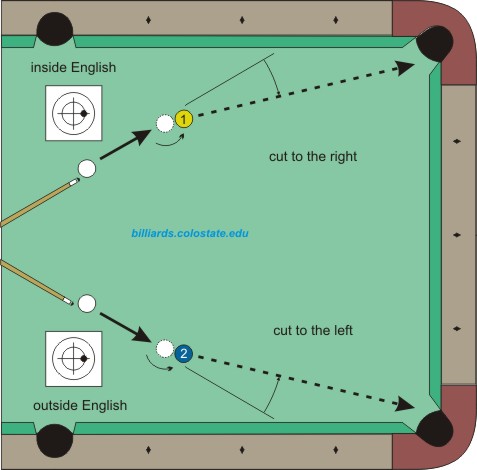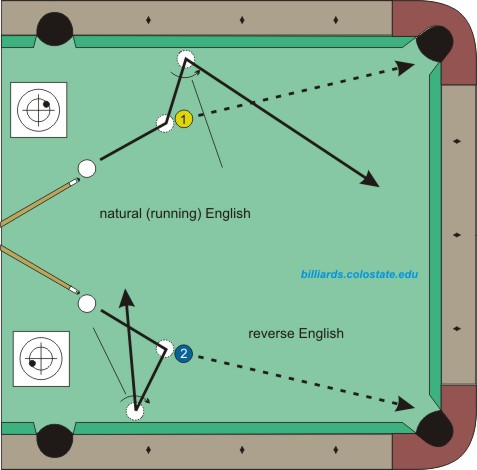I think when players start out the main aiming error they make is not cutting the ball enough. Outside english throws the ball in a little and low outside causes a little swerve too which helps them pocket balls. This becomes a crutch and some shots they can only make with outside. For me it was back cuts to the corner. I could make them all day long with low outside but couldn't make them with no english to save my life. It took a long time to get that sorted out and I haven't quite yet.
I have really focused on inside english for a while now though and have a system for aiming them that is rock solid so now I love using inside english. And outside english. And no english. Heck, I just love whenever I have a chance to play.


